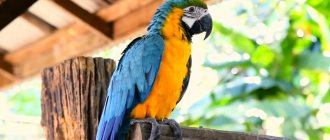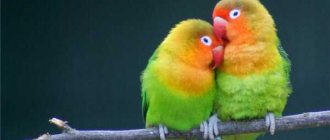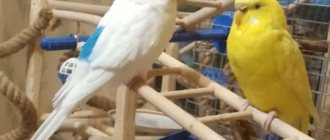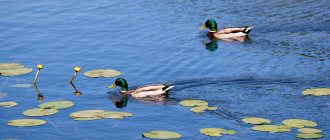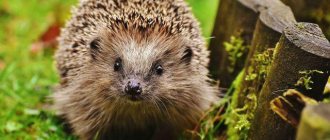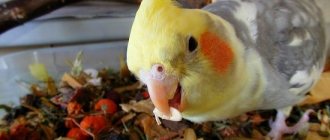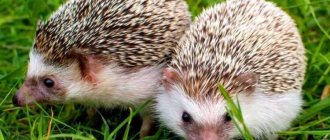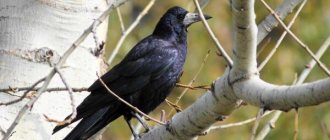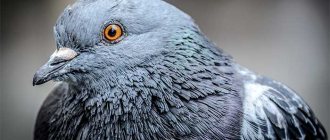When choosing a parrot, a person does not always think about how long a feathered pet can live in captivity. Small birds can bring a lot of positivity to a family, create comfort and a favorable atmosphere of friendly communication. Do not forget that tiny budgies are very fragile creatures; they need to be surrounded with care and special attention.
Lifespan
If we take the average, the lifespan of budgies is from 4 to 8 years. It is directly affected by the quality of life. In nature, birds fly thousands of kilometers in search of optimal conditions for living and food. Injuries received during flights, illnesses that arise subsequently, and natural disasters reduce life expectancy several times.
Outbreaks of contagious diseases can kill large numbers of birds. Such pathologies are most dangerous for young birds whose immunity has not yet fully developed. Some epidemics kill thousands of individuals.
At home
Living in comfortable conditions created by man gives the parrot a lot of pleasure. This is understandable: he is provided with regular food, he is taken care of, and he lives in a favorable microclimate.
In such conditions, the lifespan of an individual increases: next to a person, a budgerigar can live about 8-10 years. Provided that the feathered pet’s body consistently receives the necessary minerals and vitamins, and there are minimal stressful situations in its life, its lifespan can increase to 15 years.
Gender has no effect on the lifespan of birds. Being in the same living conditions, females and males live the same number of years.
In nature
Budgerigars come from sunny Australia. The most popular habitats for birds: the northeastern and southwestern parts of the driest continent on Earth. In the wild they live in flocks. To move, they are divided into small groups, each of which consists of 10-15 individuals.
Being in natural conditions, budgerigars rarely live to be 5 years old. And 8 years of age is rather a great success and an exception to all the rules.
In Australia, the climate is extremely unpredictable: small rivers dry up and turn into streams, while tree roots rot from the abundance of precipitation. In this regard, birds are forced to become feathered nomads: they are always in search of a better place to live.
During their long journeys across the mainland, they often become victims of animals they encounter along the way. Therefore, the life of many birds living in the wild is fleeting. A rare bird is destined to meet old age. Many representatives of budgerigars die from a sudden outbreak of an infectious disease or become prey to a ferocious predator.
What to feed
Due to the peculiarities of the digestive system of parrots, fiber is practically not absorbed by them and leaves the intestines along with the droppings. In small parrots, metabolic processes proceed very quickly, so they are constantly saturated. You can offer them:
- Grains – millet, canary seed, hemp seeds, flax, wheat.
- Greens - dandelion and lettuce leaves, carrot and radish tops, plantain (seeds and leaves), clover, spinach.
- Minerals – you can put sepia (dried parts of cuttlefish and squid), a special mineral stone, into the cage. These items bring double benefits - they replenish the missing minerals in the parrot's food and help him wear down his beak.
- Berries, vegetables and fruits - from all the variety you need to choose those that your pet will like. Vegetables can be grated, fruits can be cut into pieces. The hard skin must be removed.
- Sprouted wheat grains are an excellent vitamin supplement to feed.
- Porridge – parrots love to eat steamed grains.
- Tree branches - fresh branches must first be scalded with boiling water. They will entertain the parrot, feed it and help keep its beak in shape.
Food and drink should always be available to a small parrot. Even short-term starvation and dehydration can have a fatal impact on his life span.
What does lifespan depend on?
If comfortable living conditions are created for the bird, and the individual is protected from stressful situations, then it will delight its owner for a long time with its cute chirping and its presence in his life. What you should pay attention to to increase the life of your pet:
- The cage in which the budgie spends most of its time should not be too cramped. The bird needs space, without which it experiences stress, which has a detrimental effect on its health. The “Parrot House” should be placed in a well-lit place, protected from drafts. This must be done in such a way that one side of the cage is hidden from visitors to the room. In this case, the cage should be at human eye level so that the pet has contact with the owner from time to time. Any heating devices should not be placed too close to the cage. An excessive amount of heat coming from outside disrupts the individual’s thermoregulation.
- If your pet is not properly cared for, it can become a victim of parasites and infectious diseases. From time to time you need to monitor the behavior of the bird: if any factor appears that causes discomfort, the activity of the individual decreases. During the daytime, healthy birds are characterized by increased interest in everything that happens around them. If the bird becomes lethargic and apathetic, you need to immediately take care of its health. You should contact a veterinarian when your pet stops communicating with its owners or has strange growths on its body. Lack of appetite and watery eyes are also causes for concern.
- Budgerigars are sociable birds: in the wild, they are constantly surrounded by their own kind. At home, it is not always possible to give the necessary attention to your pet. He may begin to feel sad due to the lack of communication. From time to time you need to put the bird on your shoulder or pick it up and talk to it about everything that is happening around. This will help reduce stress caused by boredom and lack of communication. A small mirror placed in the corner of the cage, ringing bells, and bright beads will add variety to your pet’s life. The size of the mirror should correspond to the size of the bird: only then will it help create the effect of a comrade present nearby.
Cleaning your pet's home should be done at least once a week. It must be remembered that feathers, fluff, dirt, and dust create favorable conditions for the appearance of microbes. Harmful microorganisms, in turn, can cause infectious diseases. When a bird starts sneezing, you need to urgently clean the cage.
Larger amounts of droppings usually accumulate in areas where the pet spends a lot of free time. You should monitor this and place the feeder and drinker as far as possible from this place. This will help prevent water and food from coming into contact with excrement.
What factors influence the lifespan of birds?
Genetic inheritance
This is worth thinking about before purchasing a parrot. Closely related ties of any creatures lead to a decrease in the immunity of the offspring, to serious diseases and physical disabilities.
Genetic inheritance is one of the factors for long life
When getting a pet, be interested in its origin. It is best if the chick's parents are not from the same owner. And ideally, from different cities altogether.
Light mode
Budgerigars are diurnal birds. Caring owners should establish rules for lighting the room where birds live. In Australia, where they come from, the length of daylight is always equal to the length of night. In northern latitudes it is somewhat different.
Therefore, in winter it is worth adding lighting using an electric lamp, and in summer darkening the cage with a special cape. If this is not done, then the birds will not fully sleep and rest. Hence, stress and deterioration of health.
Temperature conditions
Tempered parrots only appear in cartoons. Living wavy birds need warmth, which means that in cold times you need to heat the room where the cage is located and feed it properly.
Temperature conditions affect the life of a parrot
Complete and balanced nutrition
This is a topic for a separate big conversation, but briefly about the main points you need to know. It is advisable to feed budgies with the food that they eat in natural conditions. This is a plant based food:
- corn;
- vegetables;
- fruits.
Don't randomly give them food from your table. To boost immunity, add vitamins.
Drinking water quality
Don't feed your parrots tap water - it's dead water. It contains many harmful substances: chlorides, sulfides, metal, industrial pollution, etc.
Read also
Can budgies have fleas?
The bird's body reacts more sharply to salts and chemical additives. Metabolism is disrupted, and the digestive organs do not remove toxic substances well. And don’t pour this kind of water into the bathing suit - parrots drink from it too.
Long life depends on the quality of drinking water
Suitable cage and environment
Now about the pet house. The more spacious it is, the better. In a large cage, you can select zones, including a place where the parrot can retire and feel safe.
To entertain the bird on its own, create an obstacle course and, if possible, update its components. The cage materials and furnishings must be of high quality, treated against infections and not hazardous. Igor Ignatenkov
Physical exercise
Your pet definitely needs to fly. Let him out of the cage a couple of times a day for 20-30 minutes. Flight burns a lot of calories, thereby the bird will avoid obesity and subsequent problems associated with it. For other muscle groups, rings, swings, and ladders are suitable. Keep your parrot busy with active games. It is advisable that the loads be regular. Otherwise, time-spaced training will tire the bird and cause unpleasant and painful sensations.
Exercise is good for your parrot
Causes of death
Small bright birds have plenty of enemies in the wild. Parrots have learned to avoid many dangers. Despite this, a large number of individuals do not live to old age.
In nature:
- Water scarcity . A serious problem for the population is the lack of drinking water necessary for survival. In part, parrots have been able to adapt to drought: in order to quench their thirst at least a little, they collect drops of dew from plants or explore cave crevices in search of moisture. But, unfortunately, there is not enough liquid for each individual
- Meeting with predators . In the wild, the main threat to the life of small and harmless parrots comes from carnivorous birds and various predators. They destroy bird nests, eat inexperienced young animals and exhausted old or sick individuals. In nature, budgies are at enmity with starlings: and they often remain losers. And the winners take food and a warm home.
- Meeting with human bird exterminators . Although seemingly harmless, parrots can cause serious damage to crops. In addition, people catch especially bright and original individuals for subsequent sale. Capture methods are not always humane: as a result, some birds die prematurely.
At home:
- Injuries . The most common cause of death of parrots can be an accidental but serious injury incompatible with life. Even the strongest and seemingly healthy parrots are not immune to this.
- Flew out the window . If the bird is accustomed to free movement around the house, it can easily fly out of an open window. Birds most often do not find their way back. Finding themselves alone in unfamiliar conditions, they die.
Particular care should be taken if a cat lives in the apartment. You can only let your budgie out of its cage under supervision. Cats are small predators. The likelihood that a bird may suffer from them is quite high.
Disease Prevention
Like any domestic animal, parrots can suffer from various diseases, parasitic, infectious and colds, and be subject to injury. Diseases develop against the background of improper care, which is characterized by the following symptoms:
- dirty cage;
- unbalanced diet;
- drafts;
- too dry air in the apartment;
- tight cage;
- sudden changes in room temperature;
- stress.
If you contact a veterinarian in a timely manner, your pet’s life can usually be saved, but it is better not to treat the disease, but to prevent it. Following basic hygiene rules will keep your pet healthy and prolong its life:
- The drinking bowl and food bowl should be washed daily.
- The litter in the tray is changed every day.
- Wet cleaning is done weekly. All items in the cage are washed with soapy water or soda solution. Then rinse with boiling water and dry. If you have a steam generator, you can use it for processing. Fresh filler is poured into a clean cage.
- Feeders and drinkers are replaced as they become damaged, but at least 2 times a year.
- The perches are changed when the parrot gets ruffled.
The life of budgerigars in the wild is short. Small birds are readily eaten by birds of prey. Until recently, the natives ate parrots. They are currently being eradicated as agricultural pests in Australia. How many years your pet budgie will live next to you depends only on you. This small, energetic, cheerful and talkative bird needs constant attention and proper care.
How to increase your lifespan
The lifespan of a parrot is influenced by genetics. Not only specially trained professionals are involved in breeding bright, cheerful individuals. As a result of mistakes in the work of breeders, chicks are born with congenital diseases, which lead to a reduction in their life span.
Your pet's physical fitness also affects its health. The bird should not be confined to life in a cage. The presence of all kinds of perches and special swings will not replace her free flight around the room. Regular walks outside the “native walls of the cage” are one of the main requirements for the harmonious development of an individual.
A cereal crop that is necessary for every bird living at home is millet. Any food sold in a pet store contains it in the required quantity.
To diversify your pet’s diet, you need to add finely chopped pieces of apples or fresh carrots to the menu. When a bird moults, its food should be rich in protein-containing ingredients. Powdered chalk is a necessary additive for harmonious development during this period.
Parrots' favorite treat is grass grains. They swallow them whole: partial digestion occurs in the crop, and then the food enters the stomach. It is important to ensure that there are no foreign particles in the food. Too sharp or large particles injure the organs of the bird’s digestive system. The food should not be stale. Even the smallest amount of harmful mold causes poisoning.
Poor-quality food can cause disruption of the gastrointestinal tract, which often leads to obesity or the appearance of tumors.
How much food is needed per day for an adult: 1 tablespoon of a special mixture will be enough. The daily dose doubles during the period of growing up and expecting offspring. Vitamins should be given with caution. Budgerigars need additional vitamins A and D. However, an excess of these substances can cause some diseases and even death of the pet.
Lifespan of budgerigars in the wild
In its homeland, this bird does not live long, no more than 4 years. In rare cases, up to six. This is influenced by the laws common to the wild environment - natural selection and the struggle for survival.
Lifespan of a budgie
The cycle of growing up, according to the rules of nature, in the wild is as follows:
- development of the embryo in the egg and hatching (the mortality rate here is colossal);
- the first days, weeks and months of the chick (a very risky time);
- youth (the most active and safe period);
- fading of strength, decline of immunity, exhaustion and inevitable death (as a result of an accident, due to climate change or from the clutches of a predator).
Read also
Is it possible to give parrots a boiled egg?
How to determine age
When buying a parrot, you need to be able to determine its age. As a rule, young individuals are distinguished by a darker color of the beak and pale shades of the wax. The tail of a recently born individual is short. When the first molt period passes, it will become 1.5-2 times longer.
Conditions created by man have a direct impact on the lifestyle and lifespan of budgerigars. To ensure your pet has a pleasant time at home, you need to spend time learning about its characteristics. And then the parrots will delight their owners, living with them under the same roof for at least 8-10 years.
Life without a partner
Unfortunately, no human family can replace a parrot’s communication with its own kind. Therefore, as a rule, these birds are kept in pairs. Together they entertain each other, their lives are filled with new colors.
You need to select partners with caution; each individual has its own emotional character and the birds may not get along. The older the parrot, the more difficult the grinding process is. It is better to raise a pair from a very young age.
How to find out how old a budgie is?
How many years do macaws live?
Below are recorded data on the lifespan of macaws, presented in such publications as International Zoo Yearbook, Animal Conservation, Journal of Zoology. Once again, please note that the following is the recorded data, and not the average or maximum life expectancy of a macaw.
- Green-winged macaw (Ara chloropterus) – a case was recorded when a macaw at the age of 50.1 changed its owner. There is also unverified information that the bird lived up to 63 years.
- Scarlet's Macaw (Ara macao) – 33 years old. There are also reports of 37.1 and 64 years.
- Lesser Soldier's Macaw (Ara militaris) – 46 years old.
- Blue-and-yellow macaw (Ara ararauna) – 43 years old. Also in the magazines there are unconfirmed cases of 50 years.
- Greater Soldier's Macaw (Ara ambiguus) – 29 years old.
How many years do necklace parrots live?
Information on the lifespan of necklace parrots is taken from the following publications: International Zoo Yearbook, Animal Conservation, Proceedings of the Zoological Society of London.
- Indian ringed (Psittacula krameri) – 34 years.
- Red-headed ringneck (Psittacula cyanocephala) – 18.8 years.
- Rose-breasted ringed (Psittacula alexandri) – 23.3 years (according to the study authors, this figure is significantly underestimated).
- Alexandrov (Psittacula eupatria) – 30 years old (at the time of the study the bird was still healthy).
- Emerald ringed (Psittacula calthropae) – 14 years (according to the authors of the study, this figure is significantly underestimated).
Long life of a healthy bird
When choosing a parrot, pay attention to its appearance. The young bird has shiny black eyes, a dark spot on its beak, close-fitting wings and smooth movements. The normal body temperature for a bird is 41-42°C. If the parrot is disheveled, with feathers falling out and poor appetite, this is a sign that the bird is sick. A weak individual that does not show any interest in calling, stroking and toys will not live long .
To prevent diseases from shortening your parrot’s life, monitor its condition and take the bird to the veterinarian at the first signs of trouble.
Now you know how long domestic budgies live, and the duration and quality of existence of a talkative bird will depend only on an attentive and caring owner.
Create comfortable conditions for your little fidget, and the bird will delight everyone with its cheerful chirping and amusing pirouettes. You will not worry about how long budgies live at home, because the pet is already guaranteed a long and happy bird life.
How many years do kakariki, Senegal parrot, eclectus and black-headed caique live?
Information on the life expectancy of kakariki, black-headed caiques, senegals and eclectus was obtained from the publications: Animal Conservation, International Zoo Yearbook.
- Red-fronted jumping parrot (Cyanoramphus novaezelandiae) – 12.4 years.
- Yellow-fronted jumping parrot (Cyanoramphus auriceps) – 9.3 years (at the time of the study the bird was still healthy).
- Black-headed white-bellied caique (Pionites melanocephalus) – 22.6 years (at the time of the study the bird was still healthy).
- Senegal parrot – 40 years.
- Eclectus (Eclectus roratus) – 28.5 years. Some sources provide unconfirmed information about eclectus living for 40.8 years.
